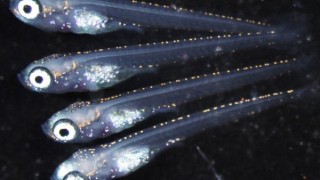
A team of Japanese researchers has discovered the genetic switch that determines the fate of a type of reproductive precursor cell, called the germ cell. The gene in question, dubbed foxl3, was identified using Japanese rice fish, or medaka (Oryzias latipes). Once the gene’s functionality were removed, females commenced production of sperm cells in their ovaries. The team confirmed that the resultant sperm cells were viable and capable of producing regular offspring.
Spearheaded by researchers from the National Institute for Basic Biology, National Institutes for Natural Sciences and the Okazaki Institute for Integrative Bioscience, the team established that foxl3 works in females to prevent germ cells from differentiating into sperm cells.
Up until now, the underlying mechanisms responsible for differentiation of germ cells into the female and male reproductive cells - called egg and sperm cells, respectively - has remained shrouded in mystery.
When the team “deactivated” the foxl3 genetic switch, they were shocked to discover that the females’ ovaries mainly produced sperm cells, along with a small number of egg cells.
“In spite of the environment surrounding the germ cells being female, the fact that functional sperm has been made surprised me greatly. That this sexual switch present in the Germ Cells is independent of the body’s sex is an entirely new finding,” stated Dr. Nishimura of the National Institute for Basic Biology.
While human beings do not possess precisely the same genetic switch, the researchers think a similar mechanism underpins spermatogenesis in people.
The study, entitled foxl3 is a germ cell-intrinsic factor involved in sperm-egg fate decision in medaka, was published in the June 11 issue of the journal Science.
Top image credit: National Institute for Basic Biology.
